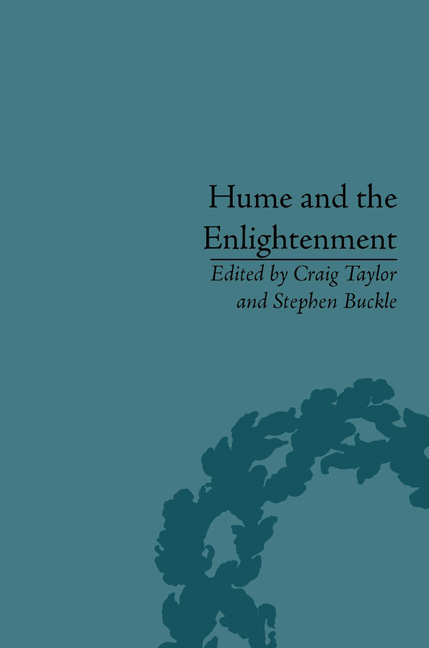Book contents
- Frontmatter
- CONTENTS
- Acknowledgements
- List of Contributors
- Abbreviations
- Introduction: Hume and his Intellectual Legacy
- 1 Hume and the Enlightenment
- 2 Will the Real Enlightenment Historian Please Stand Up? Catharine Macaulay versus David Hume
- 3 Philosophy, Historiography and the Enlightenment: A Response to Green
- 4 Hume's Enlightenment Aesthetics and Philosophy of Mathematics
- 5 Part 9 of Hume's Dialogues and ‘The Accurate Philosophical Turn of Cleanthes
- 6 ‘Strange Lengths’: Hume and Satire in the Dialogues Concerning Natural Religion
- 7 A Modern Malignant Demon? Hume's Scepticism with regard to Reason (Partly) Vindicated
- 8 Hume on Sympathy and Cruelty
- 9 Hume's Natural History of Justice
- 10 Hume and Rawls on the Stability of a Society's System of Justice
- 11 Can Hume's Impressions of Reflection Represent?
- 12 Mechanism and Thought Formation: Hume's Emancipatory Scepticism
- Notes
- Works Cited
- Index
4 - Hume's Enlightenment Aesthetics and Philosophy of Mathematics
- Frontmatter
- CONTENTS
- Acknowledgements
- List of Contributors
- Abbreviations
- Introduction: Hume and his Intellectual Legacy
- 1 Hume and the Enlightenment
- 2 Will the Real Enlightenment Historian Please Stand Up? Catharine Macaulay versus David Hume
- 3 Philosophy, Historiography and the Enlightenment: A Response to Green
- 4 Hume's Enlightenment Aesthetics and Philosophy of Mathematics
- 5 Part 9 of Hume's Dialogues and ‘The Accurate Philosophical Turn of Cleanthes
- 6 ‘Strange Lengths’: Hume and Satire in the Dialogues Concerning Natural Religion
- 7 A Modern Malignant Demon? Hume's Scepticism with regard to Reason (Partly) Vindicated
- 8 Hume on Sympathy and Cruelty
- 9 Hume's Natural History of Justice
- 10 Hume and Rawls on the Stability of a Society's System of Justice
- 11 Can Hume's Impressions of Reflection Represent?
- 12 Mechanism and Thought Formation: Hume's Emancipatory Scepticism
- Notes
- Works Cited
- Index
Summary
Infinity and the Sublime
David Hume cultivates an unusual set of overlapping interests in the philosophy of mathematics and aesthetics. Hume was an outspoken critic of the classical concept of infinity in the course of developing an empiricist philosophy of mathematics, and was also actively engaged in addressing a series of specific psychological questions concerning the aesthetics of the sublime.
Hume seldom uses the word ‘sublime’ in his occasional writings on aesthetic topics, although he does so explicitly, for example, in his essay, ‘Of the Standard of Taste’ (Es 244). Yet he clearly intends the same concept which he singles out as having an empirical origin in impressions and ideas of ‘great distance’ in space and time. He demystifies the experience of the sublime in opposition to aesthetic theorists in and around his time who consider the concept of infinity to be essential to understanding its nature. A study of this particular application better helps us to understand Hume's general philosophical methodology. What I shall say about these matters finally may appear obvious enough, yet there is something instructive in seeing the method illustrated so clearly and uncompromisingly in Hume's attitude toward infinity in mathematics and in his aesthetic psychology of the sublime.
Hume's Experimental Method
Hume exerted a profound influence on the later European Enlightenment. He did so primarily through the inherent appeal of his application of the ‘experimental method’ in the sciences to ‘moral philosophy’.
- Type
- Chapter
- Information
- Hume and the Enlightenment , pp. 65 - 76Publisher: Pickering & ChattoFirst published in: 2014



